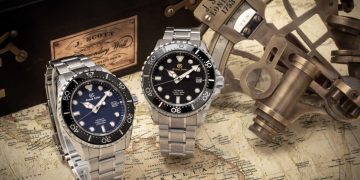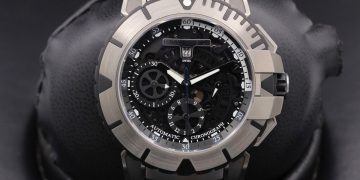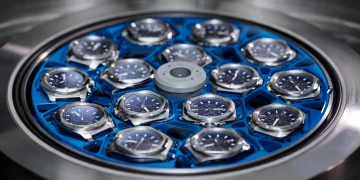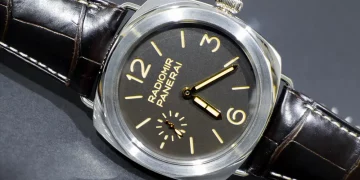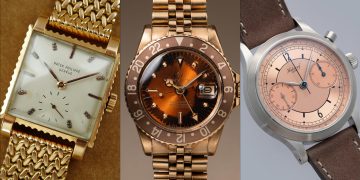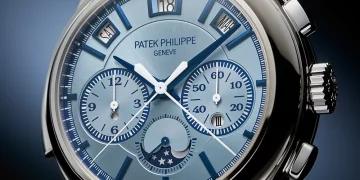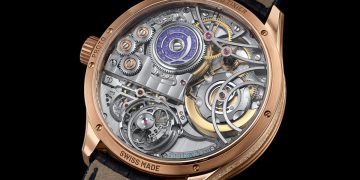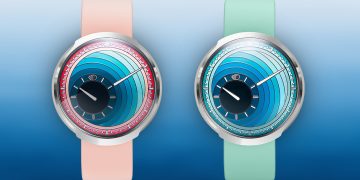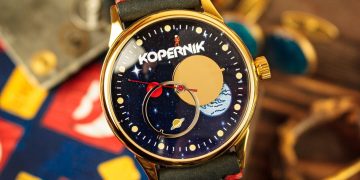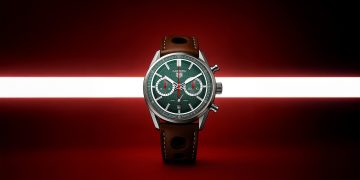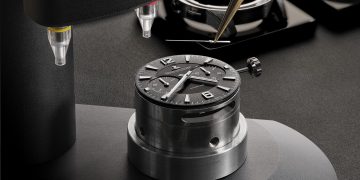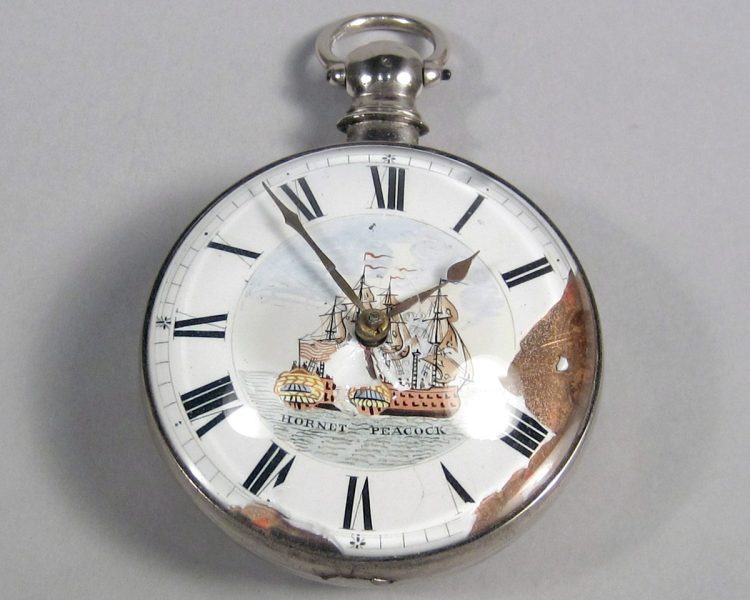The smartwatch is now an indispensable part of our daily lives. With their ability to track fitness, provide notifications, and offer a host of other features, smartwatches have become synonymous with modern wearable technology. However, what if I told you that a concept remarkably similar to the modern smartwatch was conceived nearly two centuries ago, long before the advent of Bluetooth and touchscreens? This forgotten invention—a 19th-century timepiece with unexpected parallels to today’s smartwatches—offers a glimpse into the long-forgotten history of wearable technology and demonstrates how forward-thinking ideas have often been lost to time.
This article explores the bizarre invention of a “smart” watch from the 19th century, delving into how it eerily predicted many aspects of the technology we use today. We will compare this antique device with modern wearables, highlighting the similarities and differences, and examine how these early experiments laid the groundwork for the technological advances that followed. From hidden functions to communication features, the comparison between the old and new reveals surprising overlaps. We’ll uncover the true genius of this forgotten timepiece, the legacy of early wearable technology, and how modern innovation has taken its place.
The Mysterious 19th-Century Timepiece: A Glimpse Into the Future
Before the digital age, watchmaking was an art rooted in tradition, precision, and craftsmanship. Mechanical timepieces were not just tools to tell time but were symbols of luxury and status. Yet, in the 19th century, an inventor’s imagination reached beyond the traditional scope of horology to create a timepiece that seemed straight out of science fiction.
In the mid-1800s, an inventor named Abraham-Louis Breguet (best known for his horological innovations) developed a device called the “Breguet 1780,” often considered one of the first precursors to modern smartwatches. Although the Breguet 1780 was never truly commercialized, its invention paved the way for future developments in wearable technology.
The watch was revolutionary for its time because it featured an innovative functionality beyond just telling the time. It boasted hidden mechanisms that were activated with specific gestures, an idea that would later become a defining feature of modern smartwatches. For instance, it could record data on time, atmospheric pressure, and the environment. Although rudimentary by today’s standards, it foreshadowed the multiple sensor-driven capabilities that would later become a hallmark of modern wearables.
While Breguet’s invention was lost to history for many decades, it’s clear that its ambitious goals to integrate timekeeping with practical functions were far ahead of its time. In fact, the watch anticipated some of the key features of the modern smartwatch—such as the use of sensors to collect data, and the potential for such watches to not only tell time but serve as data hubs for daily activities.
The Early Roots of Wearable Technology: From Breguet to Bluetooth
Breguet’s futuristic watch wasn’t the only early instance of wearable tech. Throughout history, various inventors dabbled with the idea of combining practical tools with wearable accessories. The most obvious example is the pocket watch, which was used not only for telling time but as an indicator of status and wealth. While it did not offer the same functionality we associate with modern wearables, it was, in a sense, the precursor to the wearable tech devices that would emerge in the 21st century.
In the 20th century, inventors took the idea of integrating technology into wearable items even further. The advent of electronic wristwatches in the 1960s was an important milestone in this development. These early electronic timepieces featured LED displays and incorporated electronic components into a compact form. Although these watches were limited to basic functions such as timekeeping and date display, they hinted at the potential of watches becoming much more than just timekeepers.
By the 1980s and 1990s, the idea of wearable technology continued to evolve with devices like the Pulsar LED watch and calculator watches. These devices began to introduce functions that could be considered “smart,” such as basic computation and personalized settings. However, it wasn’t until the 2000s, with the arrival of Bluetooth and smartphone integration, that the true modern smartwatch took form.
In 2007, Apple changed the world with the introduction of the iPhone—a device that eventually paved the way for the rise of smartwatches. The Apple Watch debuted in 2015, marking a new era for wearables by providing an array of features that included fitness tracking, notifications, messaging, and health monitoring.
The Parallels: Early Watch Features vs. Modern Smartwatches
While the Breguet 1780 may seem like an obscure precursor to the modern smartwatch, the comparison between the two shows surprising parallels. Here’s a look at how the features of Breguet’s invention foreshadow the capabilities of modern smartwatches:
1. Sensors and Data Collection
The Breguet 1780 used hidden sensors to record atmospheric pressure and other environmental data. Today’s smartwatches, like the Apple Watch Series and Garmin Fenix, incorporate sensors that track heart rate, sleep patterns, blood oxygen levels, and more. In essence, Breguet’s watch can be seen as an early attempt to harness data from the environment and incorporate it into a device worn on the body.
2. Health and Wellness Monitoring
While Breguet’s watch couldn’t monitor a user’s health in the same way as a modern smartwatch, it did record important data about the environment and its user’s activity. Modern smartwatches are designed to track fitness and provide insights into wellness by monitoring calories burned, steps taken, and even providing ECG readings. This focus on health has become one of the key selling points of today’s wearables.
3. Gesture Control
Breguet’s watch was said to activate certain functions with specific gestures, such as a motion or change in position. Fast forward to today, and we see gesture-based interactions in devices like the Apple Watch or Samsung Galaxy Watch, where users can swipe or tap on the screen to perform various actions like answering calls or controlling music.
4. Environmental Interaction
The idea that a timepiece could interact with its environment was central to both Breguet’s watch and modern wearables. While Breguet’s invention measured atmospheric pressure, today’s smartwatches interact with the user’s environment through features like GPS, Bluetooth connectivity, and weather forecasting, offering a far broader scope of capabilities.

The Evolution of Smartwatches: What Has Changed?
While early devices like Breguet’s watch laid the foundation for wearables, today’s smartwatches represent an exponential leap forward in terms of capabilities and technology. Here’s how modern smartwatches differ from their 19th-century predecessors:
1. Miniaturization of Technology
One of the key advancements in modern smartwatches is the miniaturization of technology. While Breguet’s watch required a mechanical apparatus to function, today’s wearables incorporate highly advanced silicon chips that allow for functions like touchscreen interfaces, voice assistants, and even cellular connectivity.
2. App Integration
Breguet’s timepiece was designed with a specific set of functions in mind—timekeeping and atmospheric measurement. Today’s smartwatches, however, are designed to work with a vast array of apps. Whether for fitness tracking, social media notifications, or music streaming, modern smartwatches can be customized to the user’s preferences, creating a highly personalized experience.
3. Connectivity
The biggest leap forward with modern wearables is their ability to connect with other devices. Smartwatches today connect with smartphones, computers, home automation systems, and even smart TVs, making them central hubs for managing various aspects of life. This level of connectivity was impossible in Breguet’s time, but it’s a core feature of modern smartwatches.
4. Advanced Health Features
While Breguet’s watch had a basic understanding of the environment, today’s smartwatches include advanced health features like heart rate monitors, blood pressure sensors, oxygen level tracking, and fall detection. These technologies enable smartwatches to serve as a health assistant that can help detect abnormalities or even save lives.
The Legacy of Early Wearable Technology
Although the Breguet 1780 never achieved commercial success, its visionary concept was ahead of its time. It highlighted the potential for watches to do more than just tell the time—something that modern smartwatches have fully realized. From fitness tracking to communication and even health monitoring, today’s wearable devices have evolved from ideas first conceived by watchmakers centuries ago.
As technology continues to advance, it’s fascinating to reflect on how much early innovations like the Breguet 1780 anticipated the rise of the smartwatch. These early experiments remind us that the desire to integrate technology into personal items is not a new phenomenon, but a long-standing human ambition.
Conclusion
In the grand timeline of wearable technology, the forgotten 19th-century “smart” watch stands as a testament to human creativity and ingenuity. While modern smartwatches have certainly outpaced their 19th-century predecessors in terms of performance, capabilities, and accessibility, the fundamental idea remains the same: watches are more than just timekeepers—they are tools that integrate with our lives and help us stay connected and informed.
As we look to the future of wearable tech, we can be certain that the foundation laid by early pioneers like Breguet continues to influence the devices we wear today. Who knows what the future holds for smartwatches? If the past is any indication, the next step in wearable technology will likely be even more unexpected and revolutionary than we can imagine.


